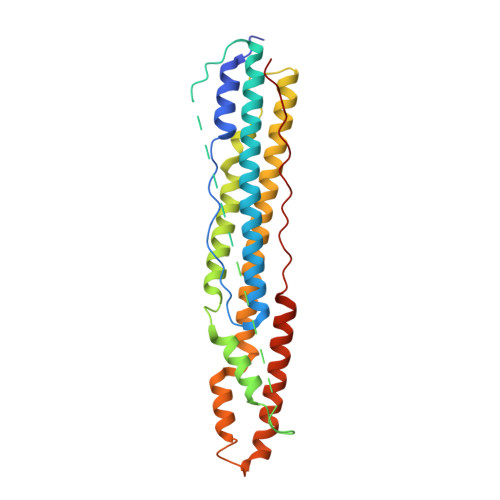Priming mycobacterial ESX-secreted protein B to form a channel-like structure.
Gijsbers, A., Vinciauskaite, V., Siroy, A., Gao, Y., Tria, G., Mathew, A., Sanchez-Puig, N., Lopez-Iglesias, C., Peters, P.J., Ravelli, R.B.G.(2021) Curr Res Struct Biol 3: 153-164
- PubMed: 34337436
- DOI: https://doi.org/10.1016/j.crstbi.2021.06.001
- Primary Citation of Related Structures:
7P0Z, 7P13 - PubMed Abstract:
ESX-1 is a major virulence factor of Mycobacterium tuberculosis , a secretion machinery directly involved in the survival of the microorganism from the immune system defence. It disrupts the phagosome membrane of the host cell through a contact-dependent mechanism. Recently, the structure of the inner-membrane core complex of the homologous ESX-3 and ESX-5 was resolved; however, the elements involved in the secretion through the outer membrane or those acting on the host cell membrane are unknown. Protein substrates might form this missing element. Here, we describe the oligomerisation process of the ESX-1 substrate EspB, which occurs upon cleavage of its C-terminal region and is favoured by an acidic environment. Cryo-electron microscopy data shows that quaternary structure of EspB is conserved across slow growing species, but not in the fast growing M. smegmatis . EspB assembles into a channel with dimensions and characteristics suitable for the transit of ESX-1 substrates, as shown by the presence of another EspB trapped within. Our results provide insight into the structure and assembly of EspB, and suggests a possible function as a structural element of ESX-1.
Organizational Affiliation:
Division of Nanoscopy, Maastricht Multimodal Molecular Imaging Institute, Maastricht University, Universiteitssingel 50, 6229 ER, Maastricht, the Netherlands.














